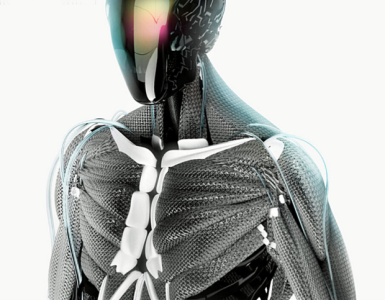by Vittorio Bollo
As the use of robotics goes from strength to strength in everything from manufacturing and mining to the gadgets we use, so the same is true in the medical field. The continued rise of robotics may be inevitable, but we should nevertheless stop and wonder: what are the pros and cons regarding robotics in the medical tech field?
This article will explore some of the positive and negative aspects of robotic usage in healthcare, some of which will be quite obvious, others less so.
First, Let’s (Try) to Get the Terminology Right
Terminology in the robotics sphere can get confusing, so there’s need for clarity. For example, ‘automation’ and robotics are not the same thing. Automation is the machinery, software, or other technology used to carry out a task in place of a human worker. It can range from the fully mechanical to the fully virtual.
Robotics on the other hand is a multi-disciplinary branch of engineering that incorporates the design, construction, programming, and use of robotic machines. Obviously, robotics can be used as a form of automation, but not all robotics is automation, and vice-versa. For the purpose of simplicity in this article, the terms ‘robotics’ and ‘robots’ will be used interchangeably, although that distinction can admittedly get problematic. Even the physicist Joseph Engelberger, the man who developed the first industrial robot in the US, was unsure about the terminology. He famously said, “I can’t define a robot, but I know one when I see one”. Thank you, Joe.
The Benefits of Medical Robotics
Greater Accuracy, Less Hassle
Robotic surgery is usually more precise and, therefore, more accurate in the required intervention compared to more invasive surgery in which procedures are directly undertaken by surgeons. Dr. Abie Mendelsohn, a head and neck surgeon at UCLA, states how a surgeon’s vision is hugely magnified and extremely well illuminated thanks to a robot. In one example, a robotic arm allows a surgeon to view a patient’s anatomy in 3-D during brain and spine surgery. This enables tumors to be reached in areas that were previously almost impossible for surgeons.
According to Dr. Mendelsoh, a medical robot can also afford a surgeon far greater dexterity in their work during surgery: “The instruments can rotate several times over, which is much more than a human wrist can do.” With robotic machinery, surgeons and others in operating theaters are not having to strain their bodies as much as they do with traditional surgery. Shorter surgery times are also creating less stress on the body and less fatigue. Additionally, robots have been shown in the UK’s National Health Service (NHS) to greatly reduce the training time needed for surgeons to acquire critical skills.
Less Invasion, Less Pain, Quicker Recovery
From the perspective of the patient, robotics are often the preferred surgical option because they are less invasive than traditional surgery. The result is less pain and physical trauma and quicker recovery times for the patient. This is confirmed by Dr. Sanja Dogramadz at the University of Bristol’s Robotics Laboratory (BRL) in the UK, who says, “By using minimally invasive access to organs and tissues, robotic tools can help to reduce trauma.” This also includes other surgery-related benefits such as less blood loss and reduced scarring for patients. There is also reduced need for blood transfusions and, as a result of all these reduced risks, less risk of infection both during and post-surgery. Furthermore, Forbes cited a 2017 study that showed 78% less exposure to radiation with robotic surgery.
With less trauma to the patient during robotic surgery, so the patient suffers less pain and less time is needed to heal. Subsequently, recovery times for these patients tends to be significantly quicker, meaning less expensive hospital stays.
At What Cost?
Are Costs Too High?
Medical robotics can be expensive. Cedars Sinai Marina del Rey Hospital estimates that a single medical robot costs approximately $2 million. Furthermore, maintenance of a robotic system in a mid-size to large hospital can range from $100,000 to $170,000 a year, which is in addition to the cost of buying the robotic equipment. A 2017 Stanford University School of Medicine study of nearly 24,000 patients with kidney cancer, that comprised data from 416 hospitals nationwide between 2003 and 2015, concluded that robot-assisted laparoscopic kidney removal surgeries are in fact more expensive than conventional laparoscopic surgeries.
The Stanford team did concede that robots were invaluable in more intricate surgeries, such as those for the removal of the prostate or part of the kidney. In those instances, the high capital expenditure costs of robotics could be considered justifiable.
Furthermore, it is worth noting that the high capex costs of medical robotics can be offset by adjunct cost savings such as (usually) shorter surgeries requiring smaller teams in surgery and shorter post-surgery hospital time for patients. Those cost savings must surely make medical robotics a more economically feasible option in the future, as it is already the case today.
A Widening Health Gap and ‘Flashy Snob Appeal’
There is the danger that medical robotics will only serve to widen the gulf between poor and richer nations and communities around the world. It is a “health divide” that already exists, according to the World Health Organisation (WHO), in what it terms “profound inequities in the health status and disease burden of [global] populations.” It’s not unreasonable to caution that this technology will probably remain far too expensive for many countries and communities worldwide for years to come. What about them?
However, it could be contended that as medical robotics get wider acceptance and usage, so derived economies of scale should result in lower unit costs. This is true of any technology which was initially capital intensive, not yet fully utilized by the market, and thus expensive. That inevitable development in the use of medical robotics should make the technology more accessible to those living in poorer countries and communities worldwide – or at least more so than is the case today.
Medical robotics have also been derided by some health experts for being ‘luxuries’ that don’t actually make a significant contribution to healthcare. Ezekiel Emanuel, Wharton a health care management professor at Wharton, referred to the emerging technology as “flashy” and a “pseudo-innovation” in a searing op-ed in the New York Times. His colleague, Guy David, would separately comment that, since most hospitals in the US cannot compete on price alone, they often resort to expensive technologies such as robotics in order to appear ‘cutting-edge’. It’s what could be termed the ‘snob value’ of robotics and is worth consideration.
Environmental Costs
A lesser-appreciated drawback regarding medical robotics is the environmental impacts thereof. This is highly relevant in the context of a 2015 study by Thiel, Eckelman et al., which stated that, “The operating room is the most resource-intensive area of a hospital…”. The study focused on four types of hysterectomy surgeries, namely vaginal, abdominal, laparoscopic, and robotic, undertaken at Magee-Womens Hospital (Magee) at the University of Pittsburgh Medical Center (UPMC).
The study found that robotic hysterectomies produced 30% more surgery-related waste than the other three forms of surgical interventions. Robotic procedures resulted in the generation of six times more non-hazardous, non-recyclable waste than vaginal or abdominal procedures, and double that of laparoscopic procedures. In fact, robotic hysterectomies were found to have the worst environmental footprint of the four hysterectomy types studied in every impact category analyzed. Robotics were assessed to utilize more resources, especially packaging and plastics, and produce more waste.
A Form of Slave Labor?
Much has been said about the advent of artificial intelligence (AI) and what it will mean in terms of job losses and the future of work itself. The Starset Society has even pondered the symbiosis between AI and universal basic income (UBI). This will be as true of the medical profession as any other impacted by technology such as robotics.
But what about the notion that robotics itself could be a form of slavery? Consider what the American mathematician and philosopher Norbert Wiener had to say about robots in any workplace: “Let us remember that the automatic machine is the precise economic equivalent of slave labor. Any labor which competes with slave labor must accept the economic consequences of slave labor”.
Wiener’s assertion may seem extreme, even a radical rendering of the term ‘slavery’ itself. But he makes an interesting point. Will there come a time when robots are considered a form of slave labor? And, equally importantly, what will it mean for those healthcare professionals who work alongside them, in terms of their own ethics, not to mention their earning potential?
What is clear is that the use of robots in healthcare is far more nuanced and complex than what one might initially assume. Their use is not simply about the positives of less-invasive surgery and faster and less painful recoveries for patients.
There are also ecological and even ethical considerations that have global implications that need to be considered, if not actively addressed. As robotics becomes increasingly used in our healthcare, so too will the positives and negatives come into sharper, possibly more divisive focus.






Add comment